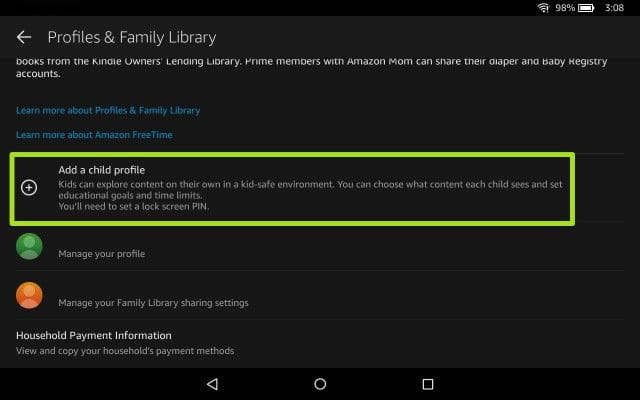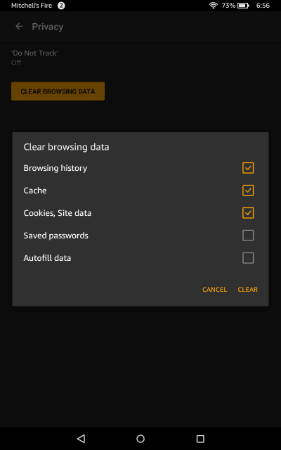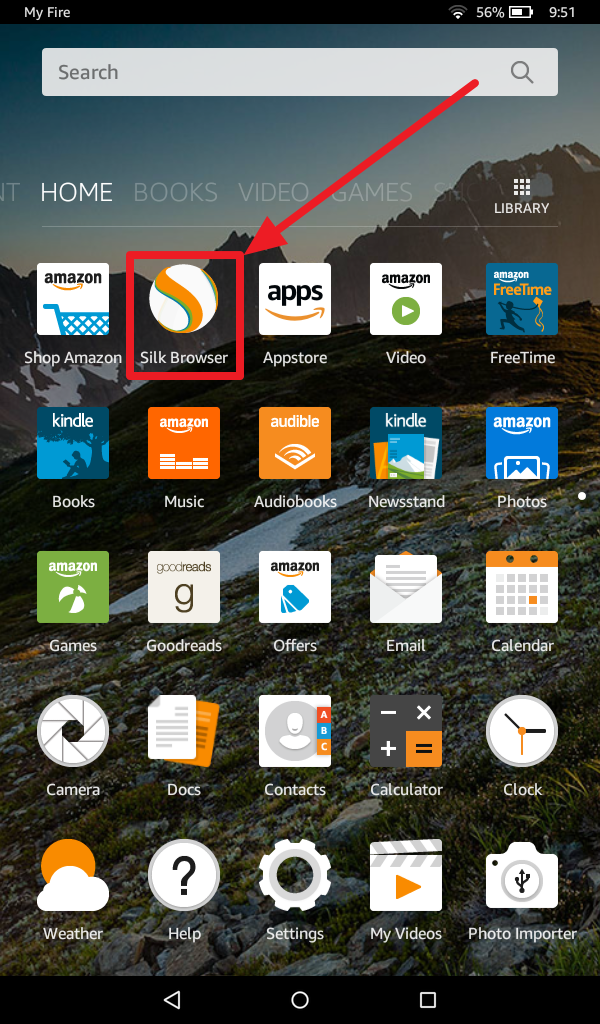Download Silk Browser for Android on Aptoide right now! User rating for Silk Browser: 4.31 ★. Mac: Mac OS® X 10.11 or later: Min resolution 1024 x 600: Ipad® 2 or later: iOS 13 or later: Products that have more specified requirements for tablets or mobile devices: Skills Modules 3.0 (see below in Additional Notes for details) Products not currently supported on tablets or mobile devices: Proctored Assessments. Silk presents the web in full screen for an immersive experience that's comfortable from your couch. You can even have Silk remember passwords for your favorite sites for quick login later. The browser menu makes it simple to navigate back and forward, add bookmarks. Mac: Mac OS® X 10.11 or later: Min resolution 1024 x 600: Ipad® 2 or later: iOS 13 or later: Products that have more specified requirements for tablets or mobile devices: Skills Modules 3.0 (see below in Additional Notes for details) Products not currently supported on. For each webpage, Silk decides which browser subsystems (networking, HTML or page rendering) to run locally on the device and which to run remotely on its own Amazon EC2 servers. Silk uses Google's SPDY protocol to speed up loading of web pages.


| Developer(s) | Amazon.com |
|---|---|
| Initial release | November 15, 2011; 9 years ago |
| Engine | Blink |
| Operating system | Fire OS |
| Available in | English, Spanish, French, Italian, Japanese, Chinese |
| Type | Mobile browser |
| License | Freeware, proprietary |
| Website | docs.aws.amazon.com/silk |
Amazon Silk is a web browser developed by Amazon. It was launched in November 2011 for Kindle Fire and Fire Phone,[1] and a Fire TV version was launched in November 2017.[2] The addition of Silk to the Echo Show was announced at an Amazon event in September 2018.[3]
The browser uses a split architecture where some of the processing is performed on Amazon's servers to improve webpage loading performance. It is based on the open sourceChromium project that uses the Blink engine.
Architecture[edit]

For each webpage, Silk decides which browser subsystems (networking, HTML or page rendering) to run locally on the device and which to run remotely on its own Amazon EC2 servers.
Silk uses Google's SPDY protocol to speed up loading of web pages.[4] Silk gives SPDY performance improvements for non-SPDY optimized websites if the pages are sent through Amazon's servers.[citation needed] Some early reviewers found that cloud-based acceleration did not necessarily improve page loading speed, most notably on faster connections or for simpler web pages.[5][6]
Some privacy organizations raised concerns with how Amazon passes Silk traffic via its servers, effectively operating as an Internet service provider for those using the browser. The Silk browser includes the option to turn off Amazon server-side processing.[7][8][9] On July 26, 2016 it was reported that Silk prevents access to Google over HTTPS, but that bug has since been fixed.[10]
Name[edit]
Chrome Web Browser For Mac
Amazon says 'a thread of silk is an invisible yet incredibly strong connection between two different things', and thus calls the browser Amazon Silk as it is the connection between Kindle Fire and Amazon's EC2 servers.[11]
See also[edit]
References[edit]

| Developer(s) | Amazon.com |
|---|---|
| Initial release | November 15, 2011; 9 years ago |
| Engine | Blink |
| Operating system | Fire OS |
| Available in | English, Spanish, French, Italian, Japanese, Chinese |
| Type | Mobile browser |
| License | Freeware, proprietary |
| Website | docs.aws.amazon.com/silk |
Amazon Silk is a web browser developed by Amazon. It was launched in November 2011 for Kindle Fire and Fire Phone,[1] and a Fire TV version was launched in November 2017.[2] The addition of Silk to the Echo Show was announced at an Amazon event in September 2018.[3]
The browser uses a split architecture where some of the processing is performed on Amazon's servers to improve webpage loading performance. It is based on the open sourceChromium project that uses the Blink engine.
Architecture[edit]
For each webpage, Silk decides which browser subsystems (networking, HTML or page rendering) to run locally on the device and which to run remotely on its own Amazon EC2 servers.
Silk uses Google's SPDY protocol to speed up loading of web pages.[4] Silk gives SPDY performance improvements for non-SPDY optimized websites if the pages are sent through Amazon's servers.[citation needed] Some early reviewers found that cloud-based acceleration did not necessarily improve page loading speed, most notably on faster connections or for simpler web pages.[5][6]
Some privacy organizations raised concerns with how Amazon passes Silk traffic via its servers, effectively operating as an Internet service provider for those using the browser. The Silk browser includes the option to turn off Amazon server-side processing.[7][8][9] On July 26, 2016 it was reported that Silk prevents access to Google over HTTPS, but that bug has since been fixed.[10]
Name[edit]
Chrome Web Browser For Mac
Amazon says 'a thread of silk is an invisible yet incredibly strong connection between two different things', and thus calls the browser Amazon Silk as it is the connection between Kindle Fire and Amazon's EC2 servers.[11]
See also[edit]
References[edit]
Download Web Browser For Mac
- ^'Amazon's Silk Browser May Not Be Smooth When It Comes to Privacy'. PCWorld. September 28, 2011. Retrieved September 29, 2011.
- ^Amazon releases their Silk Web Browser for the Amazon Fire TV – AFTV News, 28 November 2017
- ^Herrick, Justin (September 20, 2018). 'Amazon Redesigns the Echo Show, and It's Very Sleek'. TechnoBuffalo. Retrieved September 21, 2018.
- ^'Amazon Silk is hiring: Software Development Engineers – SPDY'. Aws.amazon.com. Retrieved June 24, 2012.
- ^'Amazon Silk: Assisted Web Browsing (Sort Of) : The Amazon Kindle Fire: Benchmarked, Tested, And Reviewed'. Tomshardware.com. Retrieved June 24, 2012.
- ^'Amazon's Silk Browser Acceleration Tested: Less Bandwidth Consumed, But Slower Performance'. AnandTech. Retrieved June 24, 2012.
- ^Gregg Keizer (September 29, 2011), 'Amazon's Silk browser raises privacy, security eyebrows', computerworld.com, Computerworld, pp. 1–2
- ^Thomas Claburn (September 29, 2011), 'Amazon Silk Browser Prompts Privacy Worries', informationweek.com, InformationWeek
- ^Stephen Shankland (September 29, 2011), 'Amazon Silk: One step forward, two steps back', CNET
- ^'Advisory: Amazon's Silk Browser on the Kindle Didn't Use SSL for Google Search'. Nightwatch Cybersecurity. Retrieved July 21, 2016.
- ^Amazon Silk—Amazon's Revolutionary Cloud-Accelerated Web Browser on YouTube
